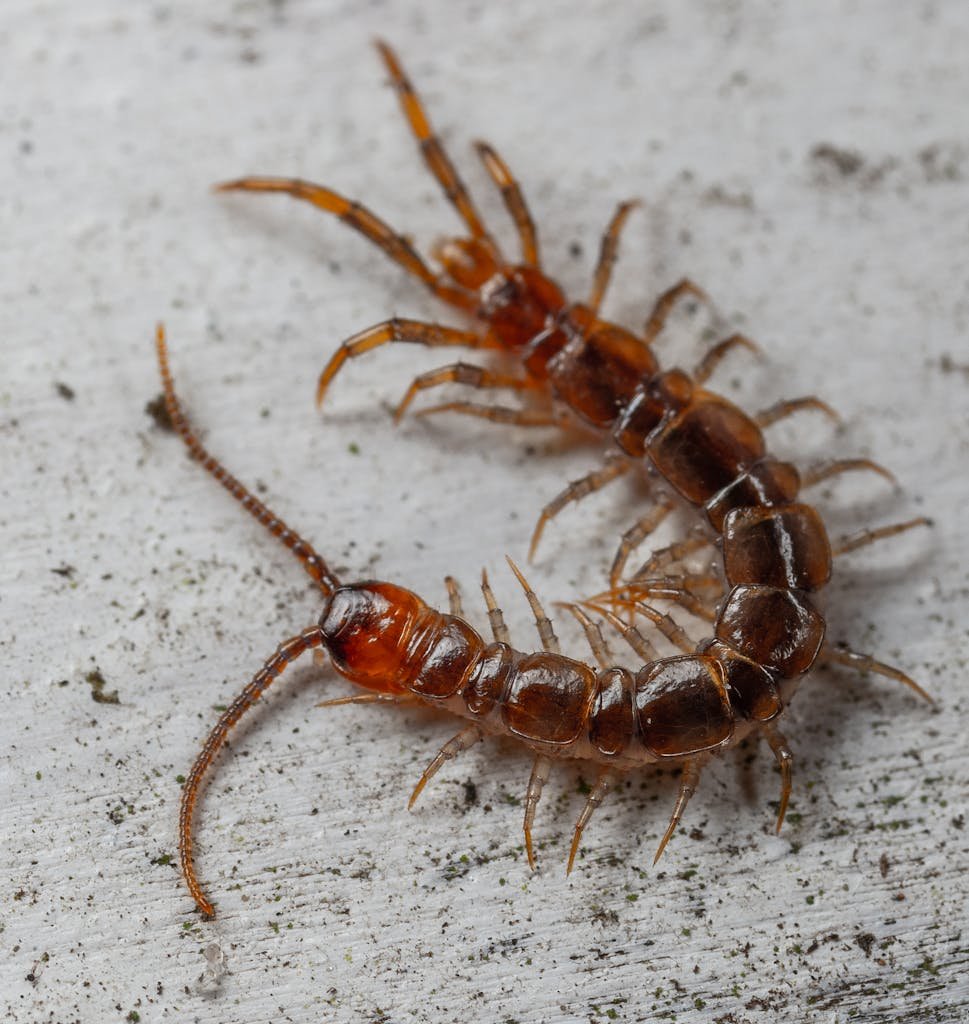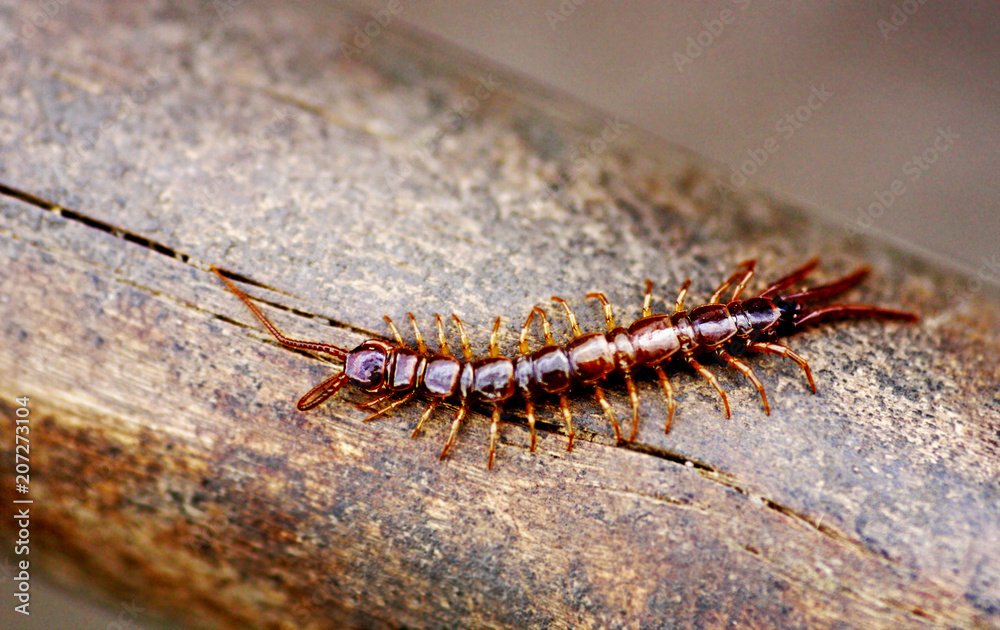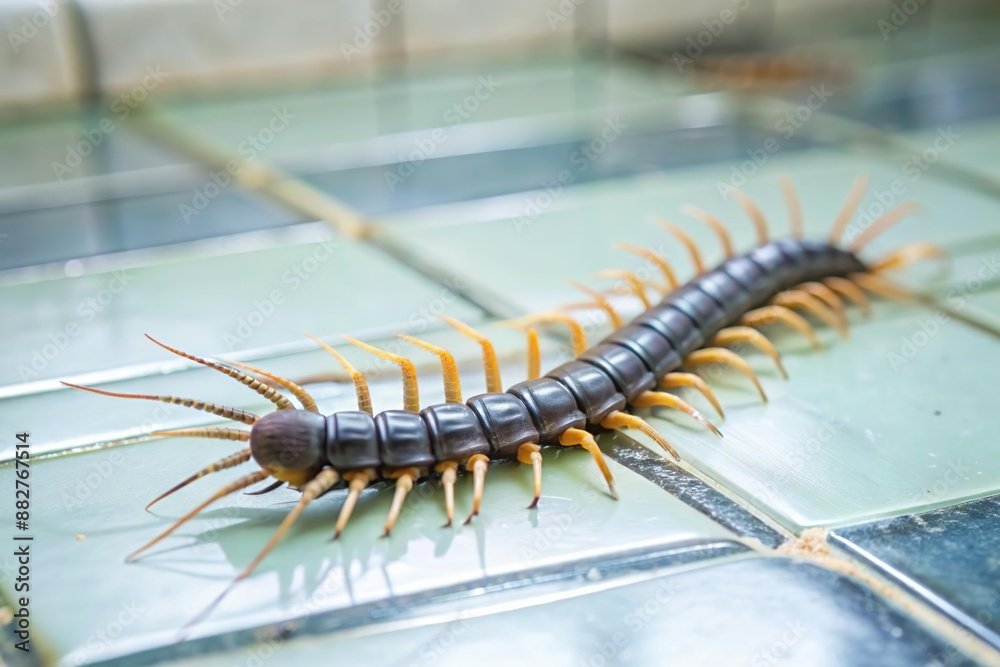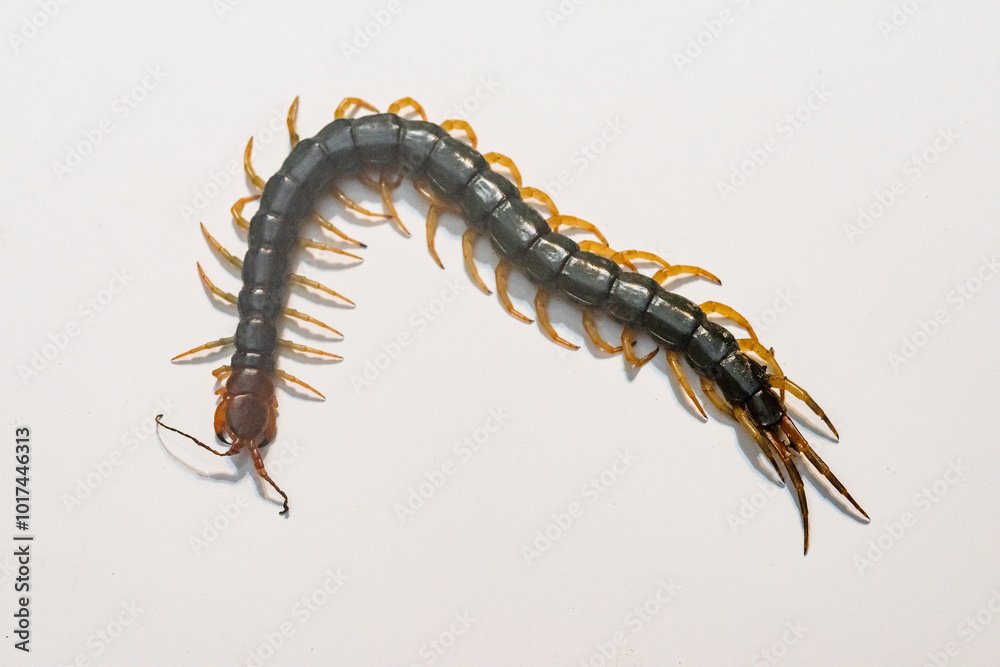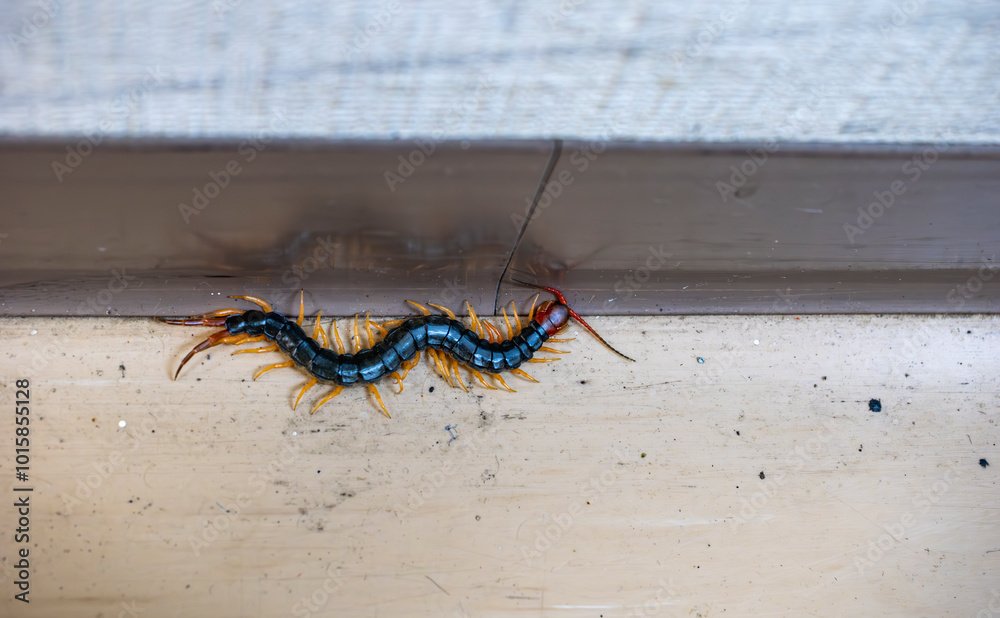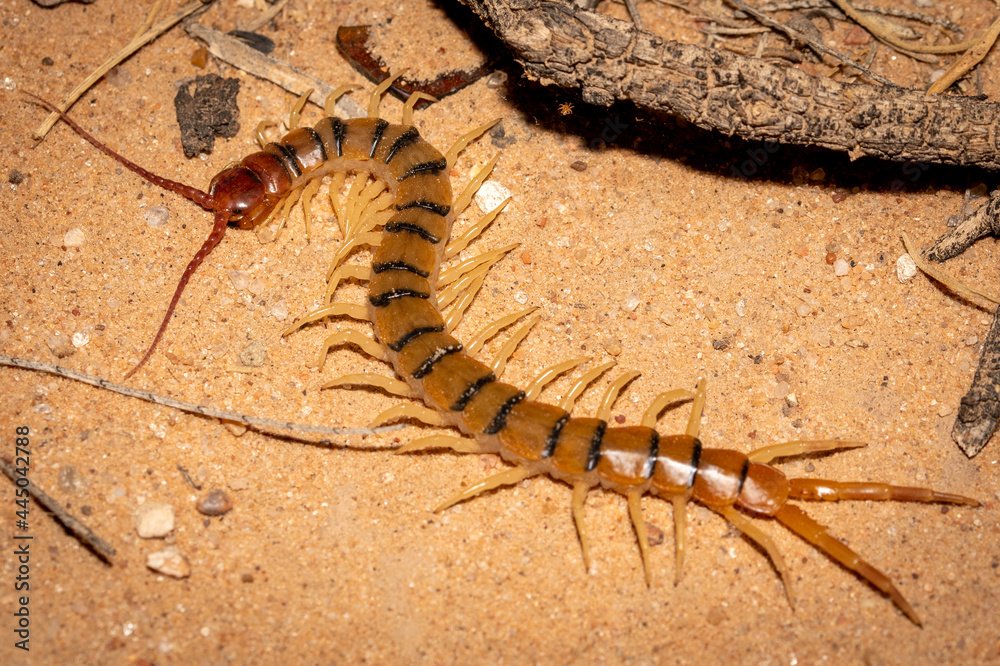Centipedes
Centipedes are elongated, multi-segmented arthropods known for their numerous legs, ranging from 15 to over 100 depending on the species. They are nocturnal hunters, feeding on smaller insects, spiders, and other arthropods. They are commonly found in damp, dark areas like basements, bathrooms, and under rocks or logs.
Appearance
Centipedes have flat, segmented bodies with a pair of legs per segment. They vary in color from yellowish-brown to dark brown, and their long, antenna-like appendages make them easily distinguishable.
Life Stages
Centipedes go through three main stages: egg, nymph, and adult. Females lay eggs in moist soil or leaf litter. Nymphs resemble small adults and gradually develop more segments and legs as they molt. The lifespan of centipedes can range from 1 to 6 years, depending on the species.
Seasonal Activity
Centipedes are most active in the warmer months and tend to seek shelter indoors during colder periods. Their activity is highest at night, as they are nocturnal predators.
Dangers and Risks
Health Risks: While centipedes do have venomous fangs, their bites are generally not harmful to humans, causing only mild pain, redness, or swelling. Some individuals may experience mild allergic reactions. Larger species can deliver more painful bites.
Property Damage: Centipedes do not cause direct damage to property, but their presence can indicate other underlying pest problems, as they are attracted to environments with abundant prey like insects and spiders.
Prevention and Control Tips
This section should include signs to watch for, simple DIY methods, and preventive measures to protect homes or properties from pests.
Prevention Methods
Reduce moisture levels in basements and bathrooms by using dehumidifiers. Seal cracks and gaps in walls, doors, and windows. Keep outdoor areas clear of leaf litter, wood piles, and other debris that can attract centipedes.
Signs of Infestation
Frequent sightings of centipedes, particularly in damp areas of the house, indicate an infestation. Centipedes are often a sign of other pest activity, as they feed on insects and spiders.
DIY Measures
Use sticky traps in areas where centipedes are commonly seen. Apply insecticidal dust in cracks, crevices, and along baseboards. Remove potential hiding spots by reducing clutter and sealing entry points.
When to Contact a Professional
Contact a professional if centipedes are found frequently or if there are concerns about other underlying pest problems.
Trap Kill’s Approach to Control
Customized Treatment Plans:
Trap Kill uses a combination of moisture control, insecticidal dust applications, and exclusion techniques to target centipedes and their prey. Our approach aims to reduce humidity levels and eliminate food sources, ensuring long-term pest management.
Certified, Eco-Friendly Solutions:
We use eco-friendly insecticides that are safe for homes while effectively reducing centipede populations. Our follow-up services include monitoring and preventative measures to keep centipedes away.
